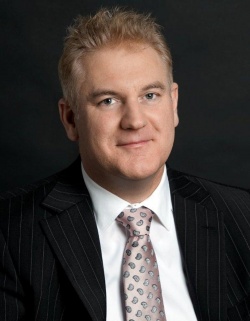Facility
Reaching into the core of process rationalisation
‘Facilities management is the integration of processes within an organisation to maintain and develop the agreed services that support and improve the effectiveness of its primary activities.’ According to the European DIN-Norm (DIN EN 15221), this defines facility management (FM). As a control tool, FM encompasses all supportive processes within a company, in this case referring to a hospital and its core business – caring for patients.
Report: Anja Behringer

As in a commercial company, it also includes service and maintenance of premises and all administrative tasks and services. All services generated by the hospital alongside the key healthcare business are reflected in data, which are administered with transparency in a FM-system for all cost centres. From catering staff wages to cleaning products used by cleaners, from the occupancy to the IT infrastructure, all departments are covered by the system – provided that it has been professionally developed and is continuously updated (see graphics). This results in clear findings as to opportunities for rationalisation and thus, in turn, in clear cost benefits.
In theory, anyway; in practice, many problems can arise because FM is not usually implemented right from the point of building design and construction. Introducing FM to existing premises is unlikely to be successful all across the board, and hospitals are so complex that even ‘old hands’ at FM only attempt partial introductions. One of these experts is Professor Kunibert Lennerts of the Institute for Technology and Management in Construction in Karlsruhe. For a long time this facility management specialist was responsible for one of the most heterogeneous and comprehensive property portfolio in Germany – assets owned by Deutsche Bahn.
European Hospital sought answers to three questions from the professor, first asking how FM could save running costs in the hospitals.
‘The ideal scenario is for FM to be incorporated during design and construction,’ Lennerts advised. ‘This facilitates primary as well as secondary process-oriented planning. However, this is extremely difficult because architects tend to lack the knowledge and the individual processes are extremely varied, and hospital operators who are striving to build exemplary hospitals and provide the opportunity for the integration of FM into the design and construction of a new building, right from the beginning, are very limited in numbers.
‘Therefore, the strategy revolves mostly around upgrading individual, particularly cost-intensive areas of the process with modern IT tools (see graphics). The so-called ‘Building Information Modelling (BIM) is a new tool that can also help with the design of virtual building models.’
Which hospital cost driver particularly suits FM introduction?
‘Space Management is very effective – as documented by some compelling figures from the Charité Hospital in Berlin. No other buildings are utilised so continuously, intensively and differently as hospitals are, making under-occupancy or inappropriate occupation particularly costly. Some of the services that are closely linked with one another do have inherent savings potentials of around 10 to 30 percent – without causing any negative impact on the primary processes of healing and caring. ‘Energy consumption is obviously a good starting point, with BIM also helping to achieve cost optimisation.’
‘The IFHE Europe, i.e. the European branch of the International Federation of Hospital Engineering (IFHE) and its member organisations from twelve countries is currently financing an energy research project.’
‘Up to 30% of hospital costs arise from secondary services, i.e. facility management services. By comparing FM processes in different hospitals it is possible to identify factors affecting cost, to uncover weaknesses and define optimisation measures. The OPIK research project (Analysis and Optimisation of Facility Management Processes in Hospitals) has been investigating comprehensive benchmarking and optimisation potential since 2001, together with partners in industry, science and specialist associations, but particularly with a growing group of hospitals partners. The overriding objective is the best possible, efficient support of the key processes, i.e. Healing and Care in the Hospital. The group also includes hospitals from Switzerland, Luxembourg and Austria.’
‘With research partners, the Institute has developed a comprehensive database of costs and services for all hospital facility management processes. The operating expenses and personnel expenditure are documented on an annual basis from an FM perspective. The database is continuously updated. ‘New hospital partners can join at any time. The hospital partners receive an evaluation of their data compared to the average benchmark. Two workshops are held every year.’
23.09.2015








